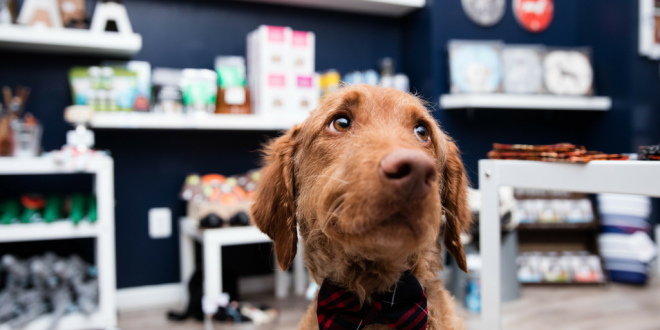Would you believe the U.S. pet industry reached over $86 billion in 2017? It is true according to a report by packaged facts called U.S. Pet Market Outlook, 2018-2019.
In India, there also has been a steady rise in the sale of pet products and services over the past 2-3 years. However, the market still remains competitive and open, with new tech disruptions causing rapid shifts in the Indian pet market landscape.
As per a techsciresearch report, the Indian pet food market is projected to cross $270 million by 2019. The growing per capita income plus the increasing pet ownership in the urban areas has given way to many new businesses in the pet industry.
Pet e-commerce in the U.S.
While brick-and-mortar stores still manage to capture the local audience in the US, eCommerce stores have seen a rapid rise in the last two years. Shoppers have been seen migrating to online pet stores for convenience.
As per an U.S. survey, 37% of online pet shoppers say – “I am buying pet products online more than I used to. The online process is easy with a huge range of products to choose from, quality guarantee and low-shipping costs.”
Amazon has been making traditional pet eCommerce retailers nervous. With over 65 million Prime members (still growing) – Amazon, with its easy-to-use shopping app and Amazon Echo (with unique voice-shopping capabilities), continues to outperform its competitors in the pet industry.
According to research, Amazon gets more than half the customers than all the other big pet online retailers combined – Chewy.com, PetSmart.com, Petco.com, and Walmart.com.
India is still an open market
“Experts at Morgan Stanley believe that Indian internet market is going to reach an astounding $137 billion by 2020. The market capitalization of internet businesses could touch $160-200 billion by 2020.”
A study by Euromonitor International in 2015 showed the Indian pet-care market at Rs 1,394 crore – doubled from Rs 538 crore in 2011.
“The Indian pet market is still less than half of the size of that of Portugal,” said Damian Shore, analyst at the Euromonitor. The international market was worth about `6.7 lakh crore in 2015, but it grew only about 3.5% between 2011 and 2015. “With a strong economy and attitudes to pets changing fast, this explosive growth is set to continue.”
While Amazon is still India’s most preferred online shopping portal, the pet eCommerce sector isn’t dominated by it. India-based eCommerce stores such as Dogspot, Petcart, Dogkart, Petsworld, and Headsupfortails with segregated market shares are still being preferred by Indian customers.
Dogs as a niche market
In India, dogs are the most popular pets than other animals, such as cats, birds, and fishes, etc. This opens up tremendous opportunities for startups focusing on dog foods, e-commerce, or tech. The dog food/product/service segment is expected to continue to dominate against other pet products/services in the country.
The Future Forecast
The Indian pet care market is expected to grow with a CAGR of more than 20% between 2018 and 2022.
According to industry experts, the market is open, and there is growth in e-commerce in the pets and pet accessories business. With India becoming increasingly urbanized, the market will grow and sustain. So, small businesses looking for opportunities in the pet e-commerce industry in India will have an open market to establish themselves and get their market share in the upcoming 3 to 4 years.
A boom in Pet-Care Industries with E-Commerce
With the latest opportunities, the e-commerce market for pet supplies is rapidly growing, and emerging brands and retailers are seeking to capitalize. This growth can be attributed to several factors, such as the increasing number of pet owners worldwide and the rising demand for pet care essentials. In addition, the growing trend of online shopping contributes to the need for pet products like food, toys, and other accessories.
Customers browse various pet stores and products from all over the globe and can purchase items inaccessible to their locality. The global market is often broken into pet types like dogs, cats, and others. However, products related to dogs are the most popular among all the other pets due to the massive popularity of dogs being petted.
Dogs are often chosen for their loyal and affectionate behavior. As a result, the demand for dogs remains strong in the e-commerce market. Since the COVID-19 pandemic, pet owners have turned more towards e-commerce for their pet-related needs. With a large increase in 2020, the global e-commerce market for pet care will cross $40 billion. Market research has shown that e-commerce increased from around 10% in 2017 to over 20% in 2020.
Frequently asked questions
What is the future of the pet industry?
Pet care industries are expected to have the most elevated development of any segment; as of now, it is envisioned to increase by 143% by 2030 to around $118 billion.
Why is the pet care industry growing?
The growing trend of pet humanization has increased the demand for household pets. As a result, individuals are more eager to adopt little pets (cats, dogs, etc.) since they are more comfortable humanizing and relinquishing them than larger pets.
How has the pet industry changed?
The U.S. pet care industries have demonstrated great resilience and growth in sales after COVID-19. The overall market is growing at a remarkable rate.
What is the fastest-growing segment of the pet food industry?
The dog segment has the largest market share in the pet care industry, estimated to grow tremendously during the forecast period. Pet ownership has grown rapidly over the past ten years and is expected to continue growing.
Is pet accessories a good niche?
Simultaneously, with the rapid development of e-commerce and the popularity of e-commerce throughout the pandemic, pet supplies have become the most popular niches for small businesses.
Conclusion
In conclusion, pet care products have completely changed the e-commerce market, which provides many opportunities for brands and retailers to attract new customers. But, also, they’re facing several challenges, such as quality assurance, inventory management, adequate customer service, and growing competition among companies.
Businesses looking to capitalize on the pet care industry may need to address these challenges. However, with enough skill and proper knowledge of market trends, you can face these challenges while taking advantage of their opportunities.

 DogExpress
DogExpress



















 in Chandigarh, India.
in Chandigarh, India. 
